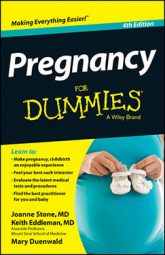Circumcision is the surgical removal of a male infant’s penis foreskin. Parents of boy babies must decide whether they want their son to have this procedure performed. The decision to have a circumcision may involve cultural and religious considerations, as well as personal preferences.
More than half of newborn boys in the United States are circumcised, but in many other countries, circumcision is rarely performed. The frequency of circumcision in the United States is on the decline, as new information is emerging that challenges the medical arguments for performing the procedure.
Doctors once thought that circumcision helped reduce the incidence of penile cancer, that it prevented infections, and that it reduced the incidence of changes in the appearance of a penis related to a tight foreskin. However, these advantages haven’t proved to be true.
In fact, the American Academy of Pediatrics has issued a formal statement that existing evidence is not sufficient to recommend routine circumcision. That said, there is some data that shows that circumcision may decrease the risk of a male infant contracting a urinary tract infection, or a male contracting HIV from an infected female partner.
Some possible complications associated with circumcision include bleeding, infection, and scarring.
Circumcision based on cultural or religious views is still relatively common. The decision, of course, is one that both parents should be comfortable with.
Some people feel that circumcision is beneficial for hygienic reasons. For example, some uncircumcised males build up a thick white discharge called smegma under the foreskin, which may lead to a bad odor or infection. However, boys can be taught to wash their penis and prevent this from happening.
If you decide to circumcise your son, your obstetrician or pediatrician performs the procedure within a day or two after your son is born — as long as he is healthy, full-term, or nearly full-term, and without any congenital abnormalities that would cause your doctor not to do the procedure.
For some Jewish and Muslim families, male circumcision is part of their religious practice. For Jewish families, they often have a ceremonial circumcision after the baby is discharged from the hospital, performed by a mohel.
Many hospitals offer injectable anesthetics or an anesthetic cream that doctors apply to the baby’s penis prior to the procedure. The emphasis on pain medication is a humane and important medical advance, prompted by studies that show that newborns do indeed react to the pain and stress associated with circumcision.
Just doing comforting things like swaddling the baby, giving sugary fluid by mouth and Tylenol are not enough to decrease the pain associated with circumcision, although they can help reduce the stress level.
Good options for real pain management, or analgesia, include a topical anesthetic cream (EMLA cream), a nerve block called a dorsal nerve block, which reduces pain sensation to the area, or a subcutaneous ring block, again acting as a block to pain sensation.
After circumcision, the doctor wraps the baby’s penis in petroleum jelly-soaked gauze. When this gauze falls off after about four hours, the top of the penis may look reddish and slightly swollen.
If the gauze doesn’t fall off, don’t pull at it. Squeeze warm water over the gauze to help it loosen. In the first few days, clean the area with warm water and keep it dry. After each diaper change, apply an antibacterial ointment or petroleum jelly until the penis heals.
The penis is usually completely healed within one week. During this time, you may notice a crusty substance at the tip; this substance is normal and goes away with time. But if the penis looks unusually swollen and discolored or if your baby has a fever, call your pediatrician.

